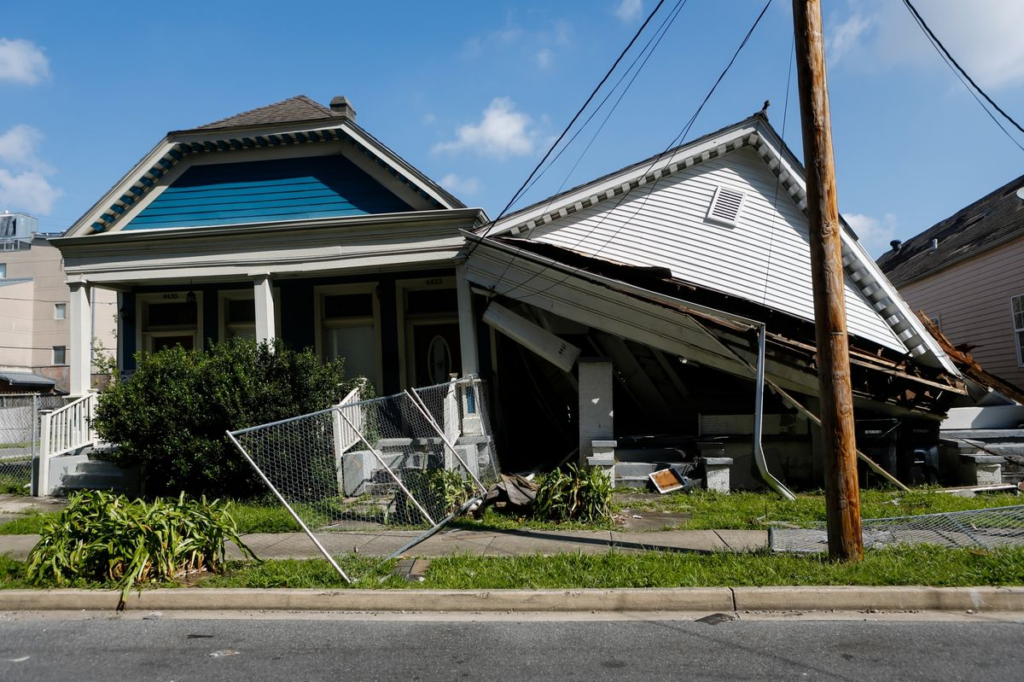
Global catastrophes around the world drove estimated economic losses of USD 270 billion in 2022, of which roughly 44% or USD 120 billion were covered by re/insurance, resulting in another above-average year of losses for the industry.
According to Munich Re, at USD 120 billion, the insured loss total in 2022 joins the recent run of years with high losses and is above the average of the last five years by roughly USD 23 billion.
Over a third of overall losses and around half of insured losses, globally, came from Hurricane Ian, which Munich Re sees as causing overall losses of USD 100 billion and insured losses of USD 60 billion (excluding NFIP losses).
When adjusted for inflation, Hurricane Ian, which made landfall on Florida’s west coast in September with wind speeds of almost 150 mph, becomes the second costliest tropical cyclone on record after Hurricane Katrina in 2005, in terms of insured losses.
North America once again dominated the loss statistics as a result of the impacts of Hurricane Ian. In fact, Munich Re finds that combined, nat cats across the region destroyed assets worth roughly USD 150 billion in 2022, of which around USD 90 billion was insured. Of these, the U.S. accounted for roughly 95% of overall losses, and 98% of insured losses.
After Ian, 2022’s second-costliest and greatest humanitarian disaster was the severe flooding in Pakistan as a result of record monsoon rainfall. In fact, August saw between five and seven times heavier rainfall than usual, and at least 1,700 people lost their lives.
Direct losses from the flooding are estimated at USD 15 billion by Munich Re, which the firm notes is very large given the size of the country’s gross domestic product.
Given low insurance penetration in the region, almost nothing was insured and Munich Re says that countless people lost all of their belongings.
In terms of insured losses, the second-costliest single natural catastrophe event in 2022 was flooding in southeast Australia in February and March. Queensland and New South Wales experienced extreme rainfall and subsequent flash floods and severe river flooding. Overall losses from the event is pegged at roughly USD 6.6 billion, with just under USD 4 billion of this insured.
Parts of Australia also experience torrential rainfall and extreme flooding in October, although losses were not as high as those seen earlier in the year. Still, overall, floods in Australia throughout 2022 caused economic losses of USD 8.1 billion, of which USD 4.7 billion was insured.
In Europe, Munich Re highlights the extreme heat and drought witnessed in the summer followed by severe thunderstorms with heavy hail. In France, hailstorms drove losses of USD 7.2 billion, of which USD 5.6 billion was covered by re/insurance.
Europe also experienced extratropical cyclones in 2022, with a series of storms in northern and northwestern Europe in February driving losses of USD 5.6 billion, of which USD 4.3 billion was insured.
In the Asia Pacific, losses from nat cats in 2022 increased to around USD 70 billion, as insured losses rose to USD 10 billion.
Excluding the flooding in Australia, an earthquake in Japan was the highest insured loss in the region at USD 2.8 billion, with overall losses hitting USD 8.8 billion.
As noted by Munich Re, in many instances, nat cat losses in developing parts of Asia are almost totally uninsured, which contributes to the global protection gap (disparity between economic and insured losses post-event).




